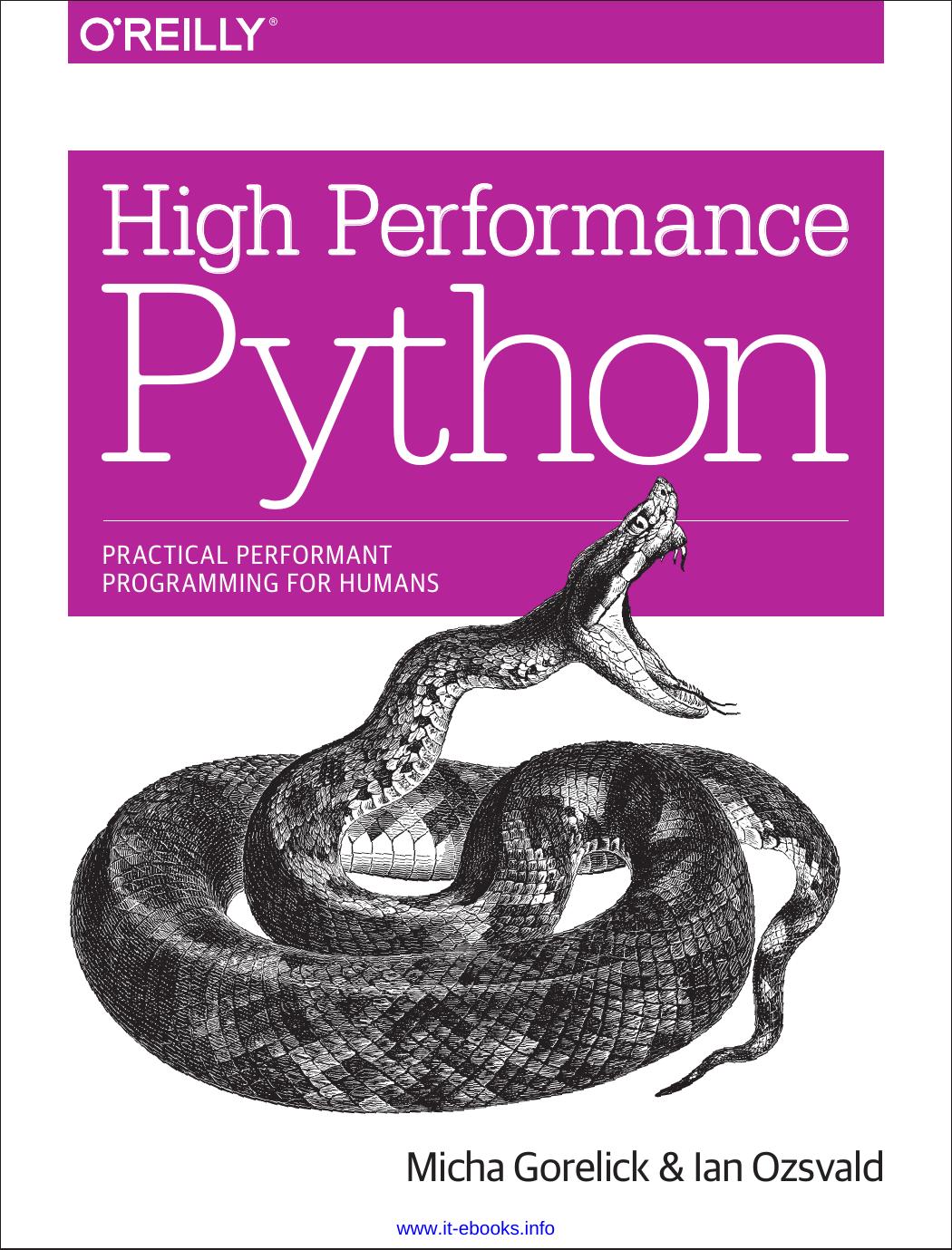High Performance Python by Micha Gorelick

Author:Micha Gorelick [Gorelick, Micha]
Language: eng
Format: epub, pdf
Publisher: O'Reilly Media
Published: 2020-04-29T00:00:00+00:00
As in the gevent example, we must use a semaphore to limit the number of requests.
We return a new coroutine that will asynchronously download files and respect the locking of the semaphore.
The http_client function returns futures. To keep track of progress, we save the futures into a list.
As with gevent, we can wait for futures to become ready and iterate over them.
One immediate reaction to this code is the number of async with, async def, and await calls. In the definition for http_get, we use the async context manager to get access to shared resources in a concurrent-friendly way. That is to say, by using async with, we allow other coroutines to run while waiting to acquire the resources we are requesting. As a result, sharing things such as open semaphore slots or already opened connections to our host can be done more efficiently than we experienced with tornado.
In fact, the call graph in Figure 8-6 shows a smooth transition similar to that of gevent in Figure 8-4. Furthermore, the asyncio code runs slightly faster than the gevent code overall (1.10 seconds versus 1.14 seconds—see Table 8-1), even though the time for each request is slightly longer. This can be explained only by a faster resumption of coroutines paused by the semaphore or waiting for the HTTP client.
Download
This site does not store any files on its server. We only index and link to content provided by other sites. Please contact the content providers to delete copyright contents if any and email us, we'll remove relevant links or contents immediately.
| Coding Theory | Localization |
| Logic | Object-Oriented Design |
| Performance Optimization | Quality Control |
| Reengineering | Robohelp |
| Software Development | Software Reuse |
| Structured Design | Testing |
| Tools | UML |
Deep Learning with Python by François Chollet(12568)
Hello! Python by Anthony Briggs(9912)
OCA Java SE 8 Programmer I Certification Guide by Mala Gupta(9795)
The Mikado Method by Ola Ellnestam Daniel Brolund(9777)
Dependency Injection in .NET by Mark Seemann(9337)
Algorithms of the Intelligent Web by Haralambos Marmanis;Dmitry Babenko(8295)
Test-Driven iOS Development with Swift 4 by Dominik Hauser(7762)
Grails in Action by Glen Smith Peter Ledbrook(7696)
The Well-Grounded Java Developer by Benjamin J. Evans Martijn Verburg(7557)
Becoming a Dynamics 365 Finance and Supply Chain Solution Architect by Brent Dawson(7054)
Microservices with Go by Alexander Shuiskov(6816)
Practical Design Patterns for Java Developers by Miroslav Wengner(6732)
Test Automation Engineering Handbook by Manikandan Sambamurthy(6675)
Secrets of the JavaScript Ninja by John Resig Bear Bibeault(6409)
Angular Projects - Third Edition by Aristeidis Bampakos(6079)
The Art of Crafting User Stories by The Art of Crafting User Stories(5607)
NetSuite for Consultants - Second Edition by Peter Ries(5546)
Demystifying Cryptography with OpenSSL 3.0 by Alexei Khlebnikov(5347)
Kotlin in Action by Dmitry Jemerov(5062)
